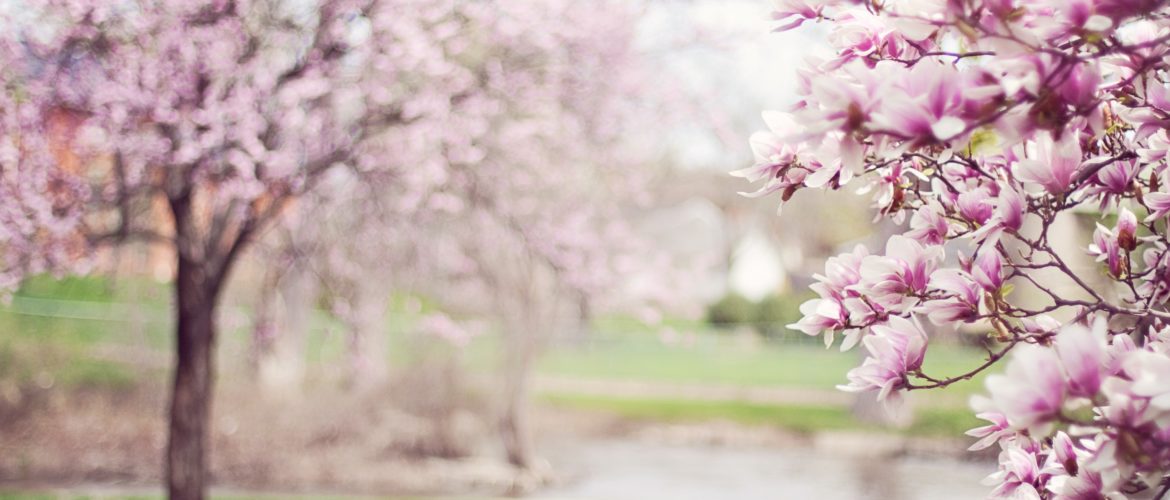Blog
Allergy Season
- April 10, 2019
- Posted by: Rachel Quattrin
- Category: Prevention Teen Tween Young Adult

Spring is here. For some, springtime is a welcome relief to the cold winter months, bringing longer daylight hours and buds on flowers and trees. For others, springtime equals sneezing, watery eyes and tissue boxes related to seasonal allergies. According to the American College of Allergy, Asthma, and Immunology (ACAAI), more than 50 million American individuals have seasonal allergies (1).
What are allergies?
Allergies are an overreaction of the body’s immune system to substances, called allergens (2). Allergens can cause the symptoms of sneezing, coughing, and itching, as well as rashes and dry eyes. Allergic reactions can range from merely bothersome to life-threatening.

What are seasonal allergies?
Seasonal allergies are defined as the body’s immune response to certain environmental triggers, which are more prevalent during a particular time of the year. Seasonal allergies are also known as allergic “rhinitis” or “hay fever”.
What are the main causes of seasonal allergies?
Changes in temperature and weather promote environmental variations that give rise to seasonal allergens. Arising from these changes are various types of pollens, grasses and weeds. There are three main allergy periods during the year:
Early Spring allergies: Pollen grains from the trees create the primary source
for allergies.
Late Spring/Early summer allergies: The allergies caused at this time of the year are mainly due to the pollen grains from grasses including: Kentucky Bluegrass, Sweet Vernal, Orchard, Timothy grass, Bermuda and Johnson (1).
Weed pollen allergies: These allergies are more common in the late summer and fall. The primary allergen during this season is the Ragweed pollen. Some of the other pollen and allergen producing weeds are Pigweed, Lambs Quarters, Curly dock, Sheep sorrel, plantain, and sagebrush (1).
What types of allergens are prevalent in Nevada?
Trees: Alder, Arizona Cypress, Ash, Aspen, Birch, Box elder, Cottonwood, Elm, Locust,
Maple, Mulberry, Oak, Pine, Poplar, Sycamore, Willow Shrubs/Grasses: Alfalfa, Clover, Broom, Juniper, Privet, Sagebrush
Weeds: Burning Bush, Cocklebur, Curly dock, Pigweed, Plantain, Rabbitbrush, Ragweed, Tumbleweed
For information on when the allergens are in the air, visit:
http://www.nevallergy.com/
What are some common symptoms of seasonal allergies?
Symptoms of seasonal allergies include:
How can I prevent allergies?
Allergies generally cannot be prevented, but the symptoms can be treated. Once a person knows they are allergic to a certain substance, they can avoid contact with the allergen. Strategies to minimize exposure to allergens include:
How can I tell what I am allergic to?
An allergist can do several different types of tests to assist in identifying what you are allergic to. Tests fall into the following categories (3):
then reintroducing them to see if allergies occur
How are seasonal allergies treated?
Seasonal allergies can be treated with medications, including nasal sprays and medications. Nasal sprays help relieve sinus-related symptoms. Medications diminish the body’s reaction towards allergies. Both have types available over-the-counter or types requiring a prescription (1). For individuals with severe or life-threatening allergies, epinephrine is often prescribed as a self-injected emergency drug to treat anaphylaxis.
For moderate to severe allergies, allergy therapy from a medical provider may also be used to reduce the severity of symptoms. Anti-immunoglobulin (IgE) therapy reduces IgE antibodies produced by the immune system in response to allergens, thereby reducing allergic responses (1). Immunotherapy consists of allergy shots and drops. Repeated dosing helps the individual develop resistance and protection against allergens.
Springtime in Nevada brings spring blooms and green grasses to the high desert area. Coupled with strong Nevada winds, this can wreak havoc on those with allergies. If you experience moderate to severe allergy symptoms, you may want to seek care with your provider or an allergist. While there is no cure for allergies, the many treatments available can help to minimize the symptoms and allow you to welcome Spring.
This blog was written for Healthy Young NV by Logan, a Youth Advisory Council member.
Resources
1. https://factdr.com/health-conditions/seasonal-allergies/
2. https://allergyid.com/patient-education/
3. https://www.webmd.com/allergies/allergy-prevention
4. https://www.unlv.edu/news/article/what-allergens-lurk-your-neighborhood
